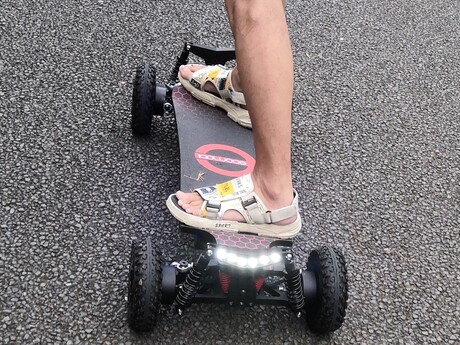How much do you understand about electric mountainboard.
Electric mountainboarding is an exhilarating outdoor activity that combines the thrill of mountainboarding with the power of electric motors. However, like any adventure sport, it is crucial to prioritize safety to ensure an enjoyable and accident-free experience. In this article, we will explore the essential precautions that every electric mountainboarder should take to stay safe on the trails.
Choosing the Right Protective Gear
When it comes to electric mountainboarding, wearing the appropriate protective gear is of utmost importance. A helmet is an absolute must-have to protect your head from potential injuries. Look for a helmet specifically designed for mountainboarding or skateboarding, as they offer better coverage and impact protection. Additionally, knee and elbow pads, wrist guards, and a sturdy pair of gloves are essential to safeguard your limbs in case of falls or collisions.
It is also crucial to invest in high-quality, durable gear that fits you properly. Ill-fitting gear can restrict movement and compromise your safety. Take the time to try on different brands and sizes to find the perfect fit that allows for comfortable movement while providing maximum protection.
Inspecting Your Equipment
Prior to each electric mountainboarding session, it is vital to thoroughly inspect your equipment. Start by checking the condition of your board, ensuring that there are no cracks, loose parts, or signs of wear and tear. Pay close attention to the wheels, trucks, and bindings, as they are critical components that need to be in optimal condition for a safe ride.
Next, inspect the battery and electrical components of your electric mountainboard. Look for any signs of damage or malfunction, such as frayed wires or loose connections. It is essential to address any issues before hitting the trails to prevent accidents caused by equipment failure.
Understanding Terrain and Weather Conditions
Electric mountainboarding often takes place on diverse terrains, ranging from dirt trails to rocky slopes. It is crucial to have a good understanding of the terrain you will be riding on to anticipate potential hazards and adjust your riding style accordingly. For example, if you are riding on a steep downhill trail, it is important to maintain a controlled speed and use the appropriate braking techniques to avoid accidents.
Additionally, always check the weather conditions before heading out for a ride. Rain, snow, or icy surfaces can significantly affect the traction and control of your electric mountainboard. Adjust your plans accordingly and avoid riding in unfavorable weather conditions that may compromise your safety.
Practicing Safe Riding Techniques
While electric mountainboarding can be an adrenaline-pumping experience, it is essential to ride responsibly and follow safe riding techniques. Always start with a warm-up to prepare your body for the physical demands of the sport. Maintain a balanced stance with your knees slightly bent and your weight evenly distributed on the board. This will help you maintain stability and control while riding.
When riding on trails, be mindful of other trail users, such as hikers or cyclists. Slow down and give them the right of way to avoid collisions and maintain a harmonious trail experience for everyone. Additionally, be aware of your surroundings and anticipate potential obstacles or hazards on the trail, such as rocks, tree roots, or uneven surfaces.
Remember, safety should always be your top priority while electric mountainboarding. By choosing the right protective gear, inspecting your equipment, understanding the terrain and weather conditions, and practicing safe riding techniques, you can enjoy this thrilling sport while minimizing the risk of accidents and injuries.
Safety First: Essential Precautions to Take While Electric Mountainboarding
For more information on electric mountainboarding safety, you can visit the following credible websites:
